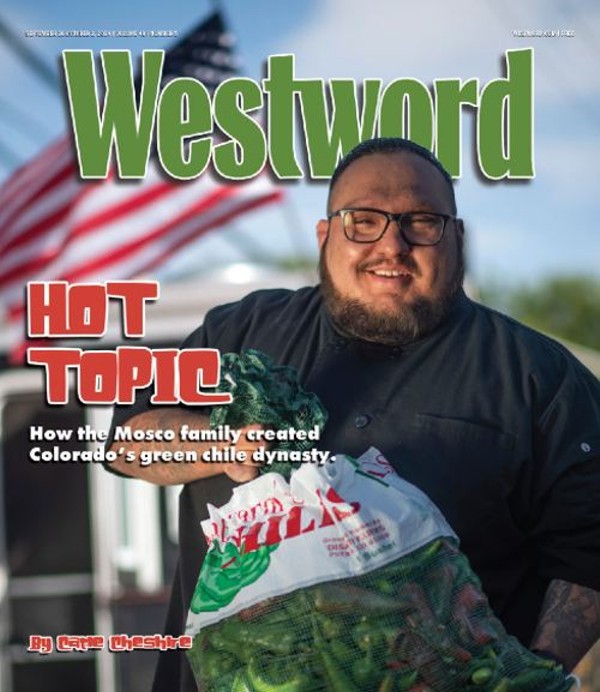The ballot information booklet goes out a month before the November election, giving voters analyses of the statewide measures under consideration. That includes a neutral summary of each measure, an assessment of the potential fiscal impacts, and the major arguments for and against the measures.
Colorado is one of few states with such a tradition; only two others (Alaska and Massachusetts) have statutes requiring neutral summaries and pro/con arguments about each ballot measure to be made available to voters, according to the National Conference of State Legislatures. In total, 24 state statutes mandate that information about measures be made available; of those, sixteen require arguments for and against.
Around two million booklets are heading to Coloradans, one to each registered voter household. As they arrive, here's everything you need to know about the Blue Book:
Why Does Colorado Have a Blue Book?
The Colorado Constitution requires ballot information booklets to be created and distributed to voters before any statewide election featuring an initiated or referred constitutional amendment or legislation. That's thanks to the 1992 Taxpayer's Bill of Rights, which created a requirement that election notices be sent to voters with pro/con arguments for each ballot measure.In 1994, voters passed another ballot initiative mandating that the state include impartial information on all statewide ballot measures in the booklet.
However, the history of Colorado's Blue Book goes back even further. The first edition was published in 1954 by Legislative Council Staff, though the booklets were not mailed to voters until the mid-’90s. Before then, copies were available at public locations such as libraries, local government offices, political party outposts and grocery stores.
Under the constitutional text, the booklets must be sent to all active registered voters in the state at least thirty days before the election. For each measure, the booklets must include the text, title and a "fair and impartial" analysis consisting of a summary and the major arguments for and against. It can also feature any other information to "assist understanding the purpose and effect of the measure."
In addition to being mailed to voters, the Blue Book is available online in English and Spanish at leg.colorado.gov.
Who Makes the Blue Book?
The Blue Book is created and distributed by the state legislature's nonpartisan research staff, as mandated by the Colorado Constitution. This year, 48 staff members worked on the booklet, beginning the drafting process back in May, according to policy and research manager Julia JacksonLegislative Council Staff are responsible for writing not only the neutral summaries of the ballot measures, but the arguments for and against, as well.
Staff members interview supporters and opponents of the measures throughout the writing process and post the first draft of the booklet online at coloradobluebook.com to collect public comments. After a round or two of revisions based on the feedback, state legislators on the Legislative Council committee review the final language. The legislators can vote to make revisions with approval from two-thirds of the committee (which is made up of the same party split as the state Senate and House).
The process is intended to keep the Blue Book's language as fair and objective as possible, though not everyone is always happy with the outcome.
This year, the anti-abortion group Colorado Right to Life sued the state over the booklet's depiction of Amendment 79, which seeks to enshrine the right to abortion in the state constitution. The lawsuit argues that the Blue Book inaccurately states that the measure would have no fiscal impact since it would allow the use of public funds for abortion, which could lead to the creation of state-funded abortion-related programs in the future. A judge dismissed the lawsuit earlier this month.
Who Pays for the Blue Book?
This year's Blue Book budget was around $3.56 million for printing, mailing, translating and publishing the text and titles of measures in newspapers, according to Jackson. That doesn't include paying for staff time.The money comes from the Blue Book revolving fund, which the state legislature appropriates from the state's General Fund. That money carries over from year to year, Jackson says.
The state constitution specifies that the legislature must provide sufficient funds for the booklets and cannot charge voters to receive them. However, since most of the state's General Fund revenue comes from income and sales taxes, voters are kind of paying for the Blue Book anyway.
So you might as well read it.
Why Is the Blue Book So Long?
This year's Blue Book is a whopping 88 pages. That's because Colorado has a near-record fourteen statewide ballot measures under consideration this November. There haven't been that many statewide ballot measures since 2008. Last year, there were only two.In addition to analyses of the fourteen measures, the Blue Book also features information about the performances of judges being considered for retention and the addresses and telephone numbers for local election offices.
Ballots will be sent to voters between October 11 and 18. Election Day is November 5. Keep an eye on our Election topic page for all of our latest coverage.













